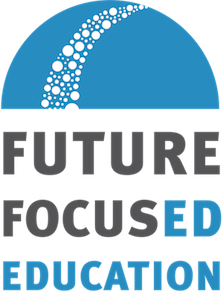What is “Family Engagement”? and Why Is It Important in New Mexico?

“We recognize that we must prioritize healing, trust, and meaningful connections between schools and the communities.”
The origins of the phrase, “It takes a village to raise a child,” may be unknown, but its use is widespread and common, especially in family and community engagement work. The saying resonates in places like New Mexico, where family and community are key forces for the preservation of language and culture, instilling in young children a sense of self and understanding of place.
However, for too many families—and for far too long—the chasm between school and home has been long and wide. Public school systems have historically normalized assimilation over individuality, indoctrination over inclusion. The communal transformation and cultural conditions needed to urgently and radically improve opportunities and outcomes for all students require us to re-examine and re-prioritize the role of family and community in our schools and education systems.
By centering a child’s first teacher—their parent or caregiver—we can ensure a solid foundation upon which all other knowledge and skills may be acquired. Since time immemorial communities have worked together, leveraging individual assets and amplifying collective wisdom to support the growth and well-being of their youngest, as well as the safeguarding and sustainability of culture.
An example of this emerged in popular discourse during the pandemic; as educators were talking about “Maslow’s before Bloom’s,” Indigenous scholars were quick to point out the Blackfoot origins of such frameworks—ones that prioritize community wellness.
In the spring 2020, “family engagement” took on a whole new meaning as schools shifted to remote instruction across New Mexico. Learning was taking place everywhere from living rooms and kitchen tables, to cars parked outside public libraries, and more.
In surveying over 20,000 families and caregivers that year, one thing was clear: communication between school and home was at an all-time high. And, while this increased connection was born of tragedy and crisis, it opened an opportunity to leverage renewed channels of communication and to dedicate additional resources to deepening school-home partnerships.

Forging New Partnerships with Families
Now, thanks to a tremendous investment of federal funds, the New Mexico Public Education Department (PED) is launching a multi-tiered approach to supporting and scaling engagement efforts statewide. The approach includes four key components, implemented over the course of two years. Year one will prioritize leadership development and professional learning opportunities for educators and school staff. Year two will focus on building and sustaining school and district capacity through direct support and coaching from regional specialists.
PED is committed to supporting PK-12 public schools in welcoming all families and engaging in equitable and effective partnership throughout each and every child's educational journey, especially those who for too long have been excluded or overlooked. This has been growing and evolving in New Mexico for years.
Under a previous administration, the state published a comprehensive framework for family engagement (see more at NMengaged.com) with support and expertise of community partners. This ongoing work is a commitment to healing historical traumas between the system of public education and the diverse communities across our state. It requires a paradigm shift for some and opens the doors for others to step into their power as we co-create a “new normal” for the way schools, families, and communities support children’s growth and development together. We recognize that we must prioritize trust, effective communication, and meaningful connections between schools and the families and children they serve.
That’s what PED aims to do in working with Sin Fronteras Education Partnership (SFEP). The partnership has created a model for schools and districts to enter the conversation about family engagement in a manner that meets their current context and climate. The content of SFEP trainings is co-created with, by, and for New Mexicans as part of a working task force of families, educators, home visitors, engagement experts, community organizers, and more who have come together to inform the work.
This is not a top-down initiative from the State. We’ve seen the power of locally-designed programs and practices—community schools have shown us what can happen when we prioritize holistic supports and engage in shared decision-making. SFEP has created a tiered approach to training opportunities, allowing schools and districts to elect a path best suited to their conditions and readiness.
What’s Next
Looking ahead, PED will provide ongoing consulting and coaching through family engagement specialists to support school communities in developing sustainability plans for their emerging mindsets and shifts in practice. In addition, PED has joined hand-in-hand with the Early Childhood Education and Care Department and the Higher Education Department in an unprecedented showing of cross-agency support of a federal grant application that will build a system of family engagement centers across the state, supporting engagement and alignment from pre-kindergarten through college.
As a state, we talk a lot about meeting the moment and addressing the findings of the Yazzie-Martinez lawsuit. As a life-long anti-bias learner and educator, I recognize the weight and the window of opportunity to do so.
Our work is to crack open our schools and our hearts so that we may honor community knowledge and hold space for family engagement that will broaden and diversify educational pathways that promote student success. Now is the time to lead with love, and practice revolutionary inclusion.


